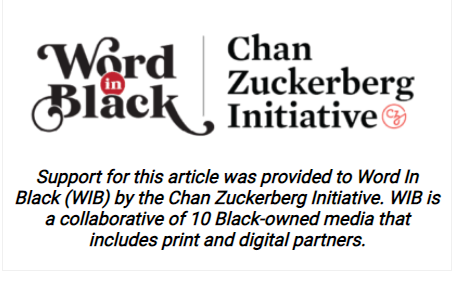Photo: Getty Images
As part of November’s National Homeless Youth Awareness Month, we took a closer look at what was the scope of youth experiencing homelessness in Detroit, the factors that contribute to housing instability for young people and the community organizations providing a stable environment for those without a sustainable living environment.
“There are many reasons why a young person is experiencing homelessness,” said Courtney Smith, founder and CEO of Detroit Phoenix Center. “We just came out of the greatest public health crisis in our country and so some young people may be experiencing homelessness alongside their parents due to the chronic disinvestment in our community’s low housing stock.”
Founded in 2017, Detroit Phoenix Center is a high impact nonprofit organization that serves 150 youth year round, providing resources and support to young people who are at risk or currently experiencing homelessness. The organization includes a drop-in center where youth can take a shower and wash their clothes, a food pantry and wrap-around support including mental health services and after-school programming.
Additionally, the Center provides emergency housing intervention through providing rooms at hotels and offering the first month’s rent and security deposits for young people in the community. Their community outreach and programming reach up to 1,200 youth per year.
“Other reasons young people can find themselves homeless include employment or financial reasons,” said Smith. “Many young people have also been impacted by the juvenile legal system or the foster care system where they have nowhere else to turn. They get pushed out of those systems without many other resources.”
According to the McKinney-Vento Homeless Assistance Act of 1987, homelessness is defined as lacking a fixed, regular and adequate nighttime residence.
Homeless living situations can include sharing the housing of others due to loss of housing, economic hardship or a similar reason; living in motels, hotels, trailer parks or camping grounds due to the lack of alternative adequate accommodations; staying in emergency or transitional shelters; or sleeping in cars, parks, public spaces, abandoned buildings, substandard housing, bus or train stations or similar settings.
According to a 2021 study by the University of Michigan’s Poverty Solutions, nearly nine out of 10 unhoused Detroit students are not identified by schools.
The center crafted a new databook, “The Educational Implications of Homelessness and Housing Instability in Detroit,” to offer insights into the under identification of students experiencing homelessness in Detroit and the connections between homelessness and chronic absenteeism, mid-year school transfers, graduation and dropout rates, school discipline rates, access to public assistance and the likelihood of entering the foster care system.
 The analysis found that under identification is a problem to figure out the exact number of youth who are homeless in Detroit. The study found that “while Detroit schools identified 1,785 children as homeless in SY 2017-18, between 7,000 and 14,000 school-age children are estimated to have been homeless that year.”
The analysis found that under identification is a problem to figure out the exact number of youth who are homeless in Detroit. The study found that “while Detroit schools identified 1,785 children as homeless in SY 2017-18, between 7,000 and 14,000 school-age children are estimated to have been homeless that year.”
Black students were at a greater risk of homelessness than their peers of other races at 86 percent of students who were homeless compared to 83 percent of students overall.
“Also, of course, homelessness can arise due to family conflict and abuse in the home where there may be differing values,” said Smith, “especially among the LGBTQ+ community. In Detroit, Black and Brown youth are disproportionately represented in the homelessness space.”
Last year, the U.S. Department of Housing and Urban Development awarded nearly $5.2 million toward programming to combat youth homelessness in Detroit.
The funding is allocated under its Youth Homelessness Demonstration Program toward 33 communities. In Detroit, the Homeless Action Network of Detroit (HAND) applied twice for the funding before being awarded after a third application.
HAND locally administers HUD Continuum of Care programs, which promote community-wide funding for nonprofit providers and state and local governments to quickly rehouse homeless individuals and families while minimizing trauma and dislocation.
“Some of the parameters of the HUD funding allow us to be a bit more innovative with serving youth than we’ve ever been before because it’s a demonstration project,” said Tasha Gray, executive director of HAND. “In the next few weeks, we are going to be selecting a number of nonprofits who will be administered funding to provide a range of resources to youth experiencing homelessness, including transitional and permanent housing programs and mental health services.”
HAND does not provide direct services but coordinates the planning efforts for the Coordinated Assessment Model (CAM), Detroit’s local coordinated entry system for homelessness assistance. Their goal is to refer in-need residents with supportive programs, include a standardized intake and assessments program and work collaboratively with community service organizations.
Under the umbrella of the Detroit Phoenix Center, the Youth Advisory Board is made up of 10-12 young residents who are involved in strategically crafting the needs of their peers, including HUD’s Youth Homelessness Demonstration Program.
“Some of the biggest misconceptions is what we call the ‘adultism’ of understanding youth homelessness,” said Gray, “meaning sometimes there are adults who think that youth are homeless because of reckless, young decisions that they may have made in their lives. But in reality, some of our youth just don’t have a support system or they may be in foster care and separated from their families. Or the family unit may have unstable housing. The reasons why people think young kids are homeless are not the overwhelming reasons.”
